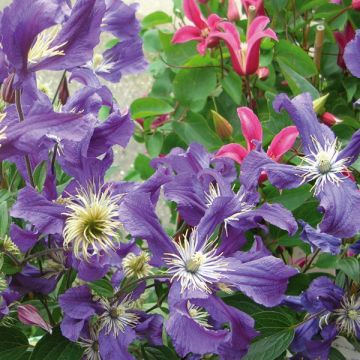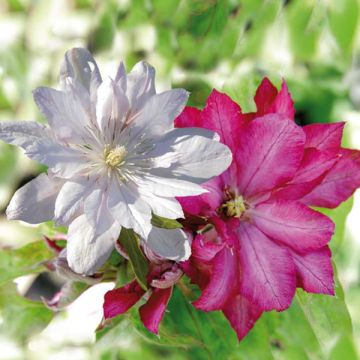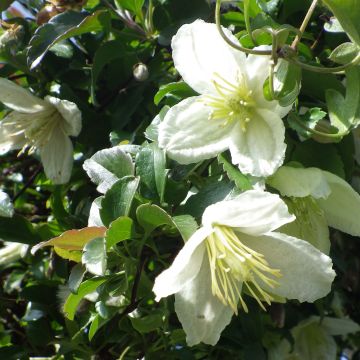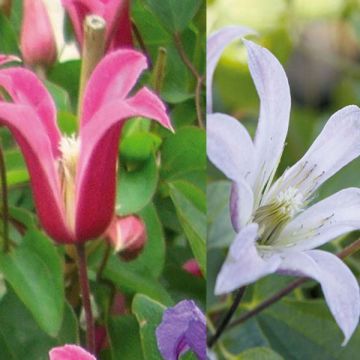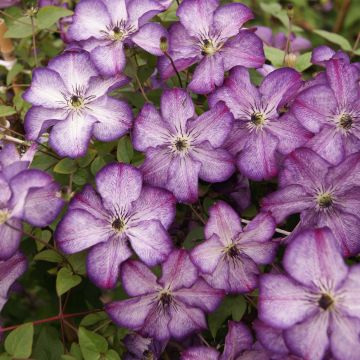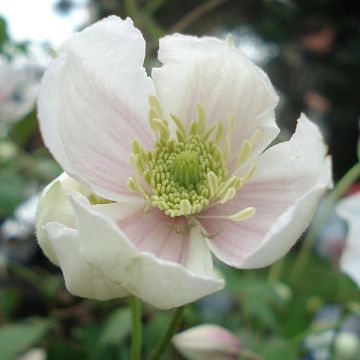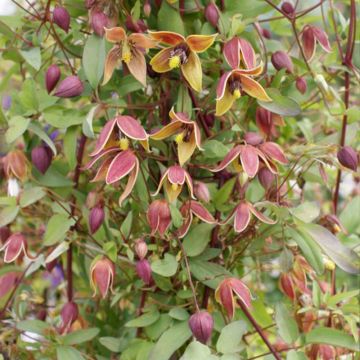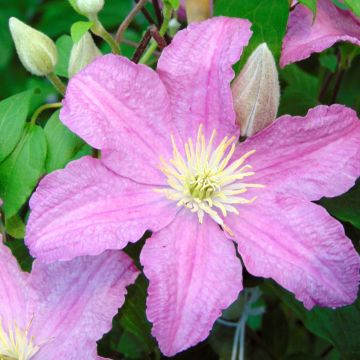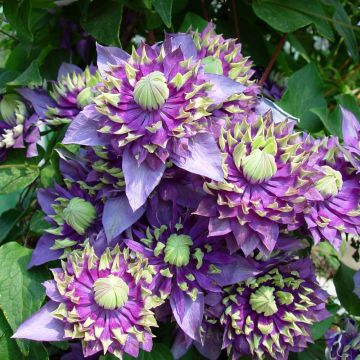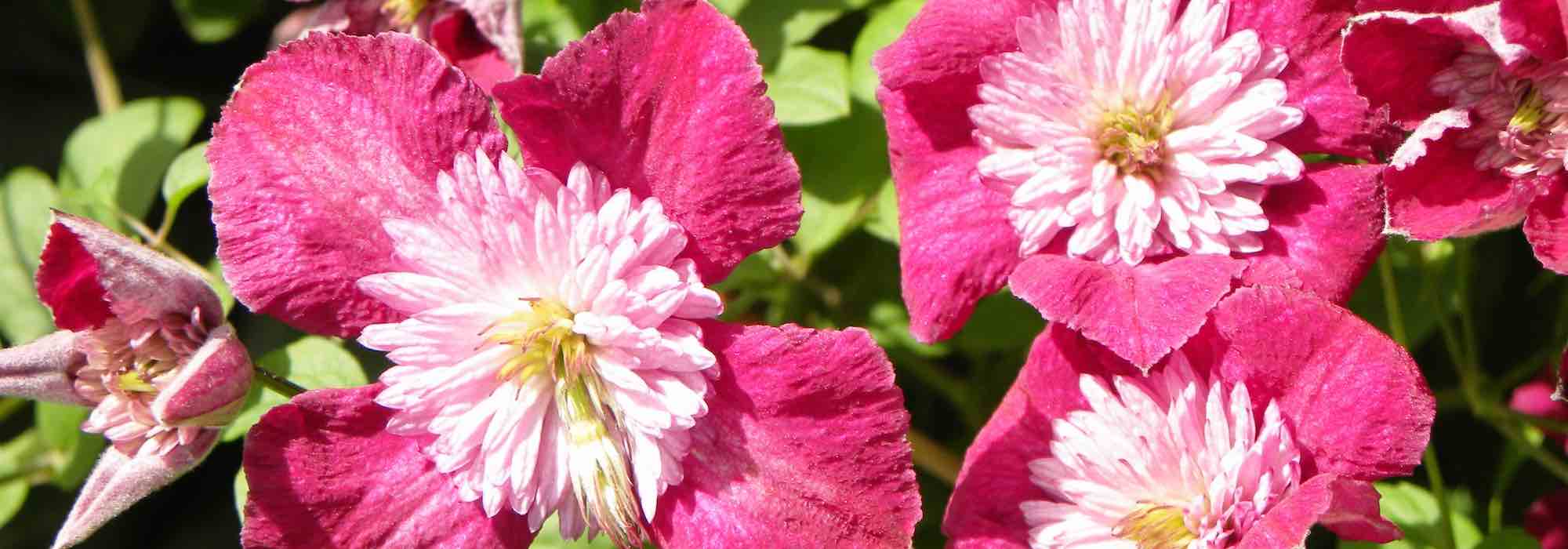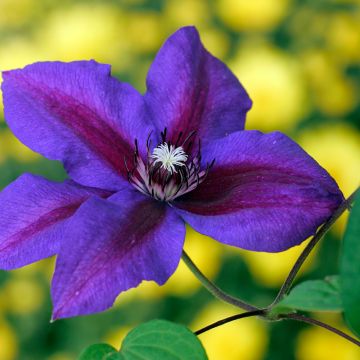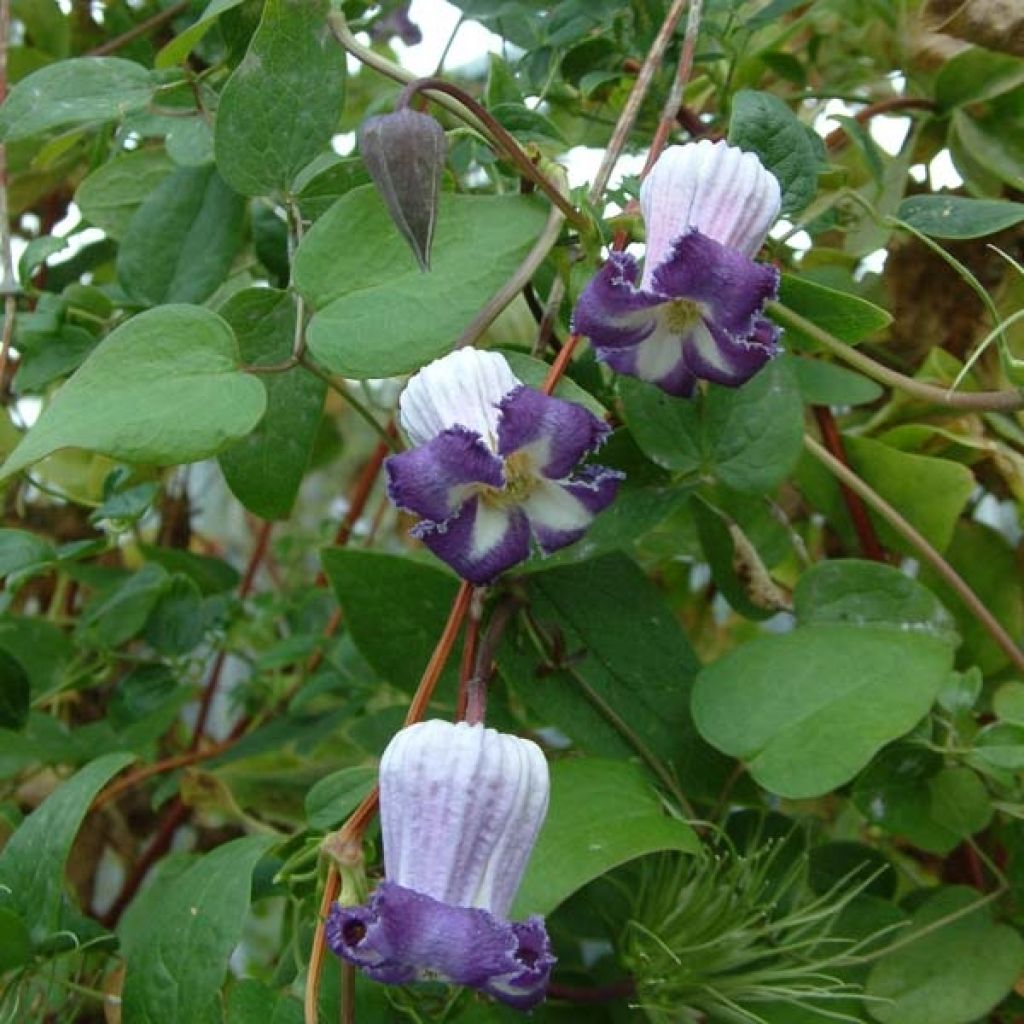

Clematis pitcheri
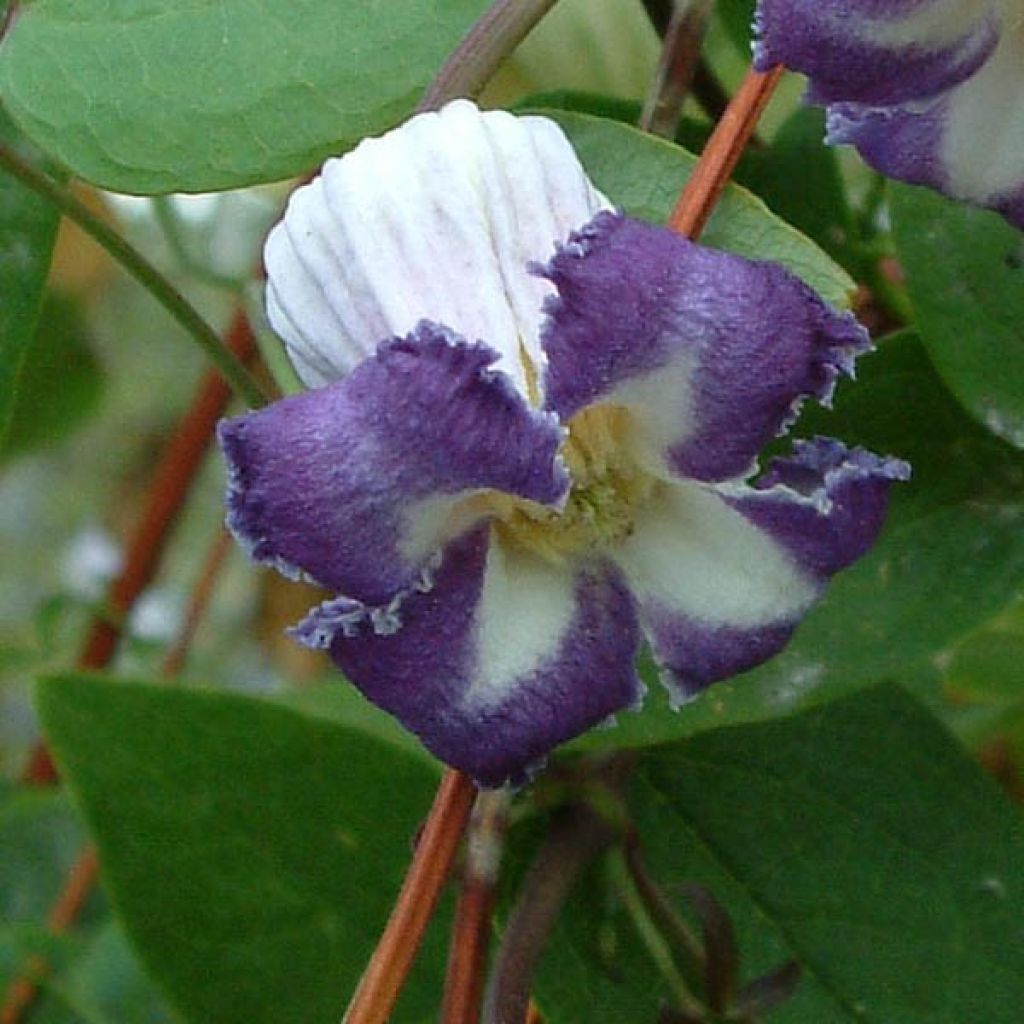

Clematis pitcheri
Clematis pitcheri
Clematis viorna Pitcheri
Vasevine Clematis, Leatherflower
It has taken well but is smaller than I expected.
claudine, 29/09/2025
Special offer!
Receive a €20 voucher for any order over €90 (excluding delivery costs, credit notes, and plastic-free options)!
1- Add your favorite plants to your cart.
2- Once you have reached €90, confirm your order (you can even choose the delivery date!).
3- As soon as your order is shipped, you will receive an email containing your voucher code, valid for 3 months (90 days).
Your voucher is unique and can only be used once, for any order with a minimum value of €20, excluding delivery costs.
Can be combined with other current offers, non-divisible and non-refundable.
Home or relay delivery (depending on size and destination)
Schedule delivery date,
and select date in basket
This plant carries a 6 months recovery warranty
More information
We guarantee the quality of our plants for a full growing cycle, and will replace at our expense any plant that fails to recover under normal climatic and planting conditions.
Would this plant suit my garden?
Set up your Plantfit profile →
Description
Clematis pitcheri (synonym Clematis viorna pitcheri) is a wild Clematis that grows in certain regions of central and south-central United States and northern Mexico, where it is found in open woodlands on slightly moist rocky outcrops. It is a herbaceous species that acts as a perennial, regrowing from the crown each spring. From late spring, this climbing or creeping plant offers an original flowering, consisting of small pendulous bell-shaped flowers, a bluish-purple colour with a nearly white rolled-back border, followed by decorative feathery seed heads. Plant it in partial shade, in well-drained but not too dry soil.
Clematis pitcheri belongs to the Ranunculaceae family, like all clematis. It is a botanic species of temperate America that can be found from Texas to western Kentucky and southern Iowa, up to an altitude of 2,200m (7,217ft). The plant is cold-resistant, and tolerates limestone, but needs light, humus-rich, well-drained soil, still slightly moist in summer.
The brittle stems of Clematis pitcheri renew themselves each spring. They can reach between 3 and 4 m (10 and 13ft) in length. The leaves have a highly variable appearance and are arranged in an opposite manner along the stems: they can be either entire or divided into leaflets. The compound leaves can have 2 to 8 leaflets, and the leaflets can be either entire or lobed, with their shape ranging from ovate to lanceolate. Flowering begins in June and continues until September. The solitary, pendulous and urn-shaped flowers, measure about 2.5 cm (1in) in length. The sepals vary in colour from violet to blue, they are recurved at the tips and may have slightly crumpled margins. The bristled seeds are gathered in plumes that can persist on the plant in winter. The flowers are visited by bumblebees. All the above-ground, deciduous vegetation dries up and dies in autumn. Prune in March to 25 cm (10in) above the ground.
Clematis pitcheri is a plant that will delight collectors of rare species. This plant has some easy requirements, it will thrive in a partially shaded rock garden in slightly moist regions, or even in a medium-altitude garden with morning sun. You can let it twine around the branches of shrubs or on a trellis, or let it crawl on the ground. You will create a beautiful composition by combining it with another bell-flower clematis, Climbing Decorosiers Opalia Rose, or climbing hydrangea 'Silver Lining'.
Clematis pitcheri in pictures
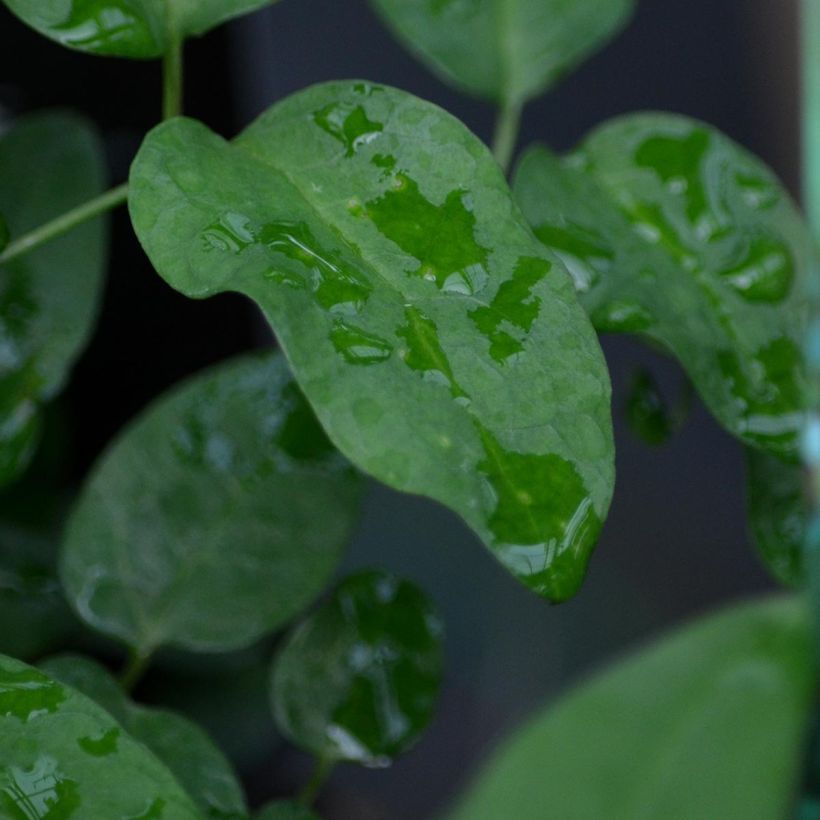

Plant habit
Flowering
Foliage
Botanical data
Clematis
viorna
Pitcheri
Ranunculaceae
Vasevine Clematis, Leatherflower
North America
Other Clematis A to Z
View all →Planting and care
In a sunny exposure (not scorching), shade the base of your plant with a ground cover or a perennial geranium. Clematis plants like to have their roots in shade. The pitcheri clematis needs well-drained soil, still slightly moist in summer. Plant your clematis by covering the root ball with 3 cm (1in) of soil, in soil worked to a depth of 20 cm (8in), enriched with good compost and a bit of gravel if necessary. During the first few weeks, water regularly. Clematis plants cling on their own thanks to their tendrils. To promote their growth, provide them with a trellis support or help them climb up the trunk of a tree by placing a wire mesh. Clematis plants also like to grow freely on neighbouring plants. We advise against overwatering, as stagnant water can cause fungus at the base of clematis plants.
Planting period
Intended location
Care
Planting & care advice
-
, onOrder confirmed
Reply from on Promesse de fleurs
Similar products
Haven't found what you were looking for?
Hardiness is the lowest winter temperature a plant can endure without suffering serious damage or even dying. However, hardiness is affected by location (a sheltered area, such as a patio), protection (winter cover) and soil type (hardiness is improved by well-drained soil).

Photo Sharing Terms & Conditions
In order to encourage gardeners to interact and share their experiences, Promesse de fleurs offers various media enabling content to be uploaded onto its Site - in particular via the ‘Photo sharing’ module.
The User agrees to refrain from:
- Posting any content that is illegal, prejudicial, insulting, racist, inciteful to hatred, revisionist, contrary to public decency, that infringes on privacy or on the privacy rights of third parties, in particular the publicity rights of persons and goods, intellectual property rights, or the right to privacy.
- Submitting content on behalf of a third party;
- Impersonate the identity of a third party and/or publish any personal information about a third party;
In general, the User undertakes to refrain from any unethical behaviour.
All Content (in particular text, comments, files, images, photos, videos, creative works, etc.), which may be subject to property or intellectual property rights, image or other private rights, shall remain the property of the User, subject to the limited rights granted by the terms of the licence granted by Promesse de fleurs as stated below. Users are at liberty to publish or not to publish such Content on the Site, notably via the ‘Photo Sharing’ facility, and accept that this Content shall be made public and freely accessible, notably on the Internet.
Users further acknowledge, undertake to have ,and guarantee that they hold all necessary rights and permissions to publish such material on the Site, in particular with regard to the legislation in force pertaining to any privacy, property, intellectual property, image, or contractual rights, or rights of any other nature. By publishing such Content on the Site, Users acknowledge accepting full liability as publishers of the Content within the meaning of the law, and grant Promesse de fleurs, free of charge, an inclusive, worldwide licence for the said Content for the entire duration of its publication, including all reproduction, representation, up/downloading, displaying, performing, transmission, and storage rights.
Users also grant permission for their name to be linked to the Content and accept that this link may not always be made available.
By engaging in posting material, Users consent to their Content becoming automatically accessible on the Internet, in particular on other sites and/or blogs and/or web pages of the Promesse de fleurs site, including in particular social pages and the Promesse de fleurs catalogue.
Users may secure the removal of entrusted content free of charge by issuing a simple request via our contact form.
The flowering period indicated on our website applies to countries and regions located in USDA zone 8 (France, the United Kingdom, Ireland, the Netherlands, etc.)
It will vary according to where you live:
- In zones 9 to 10 (Italy, Spain, Greece, etc.), flowering will occur about 2 to 4 weeks earlier.
- In zones 6 to 7 (Germany, Poland, Slovenia, and lower mountainous regions), flowering will be delayed by 2 to 3 weeks.
- In zone 5 (Central Europe, Scandinavia), blooming will be delayed by 3 to 5 weeks.
In temperate climates, pruning of spring-flowering shrubs (forsythia, spireas, etc.) should be done just after flowering.
Pruning of summer-flowering shrubs (Indian Lilac, Perovskia, etc.) can be done in winter or spring.
In cold regions as well as with frost-sensitive plants, avoid pruning too early when severe frosts may still occur.
The planting period indicated on our website applies to countries and regions located in USDA zone 8 (France, United Kingdom, Ireland, Netherlands).
It will vary according to where you live:
- In Mediterranean zones (Marseille, Madrid, Milan, etc.), autumn and winter are the best planting periods.
- In continental zones (Strasbourg, Munich, Vienna, etc.), delay planting by 2 to 3 weeks in spring and bring it forward by 2 to 4 weeks in autumn.
- In mountainous regions (the Alps, Pyrenees, Carpathians, etc.), it is best to plant in late spring (May-June) or late summer (August-September).
The harvesting period indicated on our website applies to countries and regions in USDA zone 8 (France, England, Ireland, the Netherlands).
In colder areas (Scandinavia, Poland, Austria...) fruit and vegetable harvests are likely to be delayed by 3-4 weeks.
In warmer areas (Italy, Spain, Greece, etc.), harvesting will probably take place earlier, depending on weather conditions.
The sowing periods indicated on our website apply to countries and regions within USDA Zone 8 (France, UK, Ireland, Netherlands).
In colder areas (Scandinavia, Poland, Austria...), delay any outdoor sowing by 3-4 weeks, or sow under glass.
In warmer climes (Italy, Spain, Greece, etc.), bring outdoor sowing forward by a few weeks.































